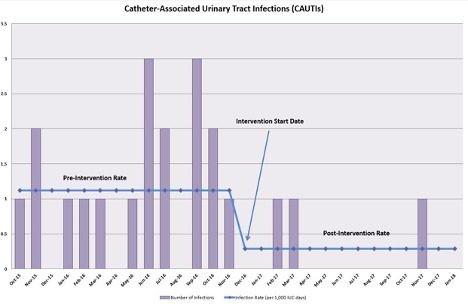Success Stories
Mount Sinai Beth Israel Uses VigiLanz to Fight COVID-19 Surge in New York City
Customer Profile
Mount Sinai Beth Israel, a 300-bed teaching hospital on Manhattan’s Lower East Side, is known for combining medical excellence with clinical innovation. Widely recognized for its superior patient outcomes, the hospital was founded in 1889 and is part of the Mount Sinai Health System, which includes the Icahn School of Medicine and eight hospitals in New York.
Challenge
Infection preventionists across the country today face multiple competing priorities and demands. From adhering to mounting documentation burdens and reporting requirements to managing day-to-day infection prevention tasks, it’s not easy to keep up with the workload and responsibilities. COVID-19 has made it even more difficult.
While the pandemic has created additional challenges for all infection preventionists, those working in hospitals that were hit hardest and earliest by the outbreak, such as Mount Sinai Beth Israel, faced even bigger obstacles.
The hospital admitted its first COVID-19 patient on March 16, 2020, when very little was known about the disease, how it spread, or how hospitals should best respond to it. By April 8, the hospital had more than 203 COVID-19 patients, and 37 of them were in critical care.
“We faced numerous challenges during this time from both a capacity and an infection prevention standpoint,” said Marie Moss, MPH, CIC, Director of Infection Prevention at Mount Sinai Beth Israel. “We opened six additional critical care units and many medical units to care for these patients. We had to rapidly implement safeguards to prevent the spread of COVID-19.”
Solution
Jordan A. Ehni, MPH, CIC, Systems Integration Infection Prevention Manager at Mount Sinai, knew that keeping patients and staff safe would require the hospital’s infection prevention team to rapidly harness all of their resources. One such resource was VigiLanz, a clinical surveillance platform that was already supporting several of the hospital’s infection prevention initiatives.
In fact, over the past few years, Ehni had spearheaded numerous patient-care improvements using VigiLanz. He had worked with VigiLanz’s clinical support team to create a Foley catheter report, which identified patients with Foley catheters or expired Foley orders. The reports were automated by VigiLanz and disseminated daily to key team members and hospital leadership. Over a 14-month period, these reports reduced the number of catheter-associated urinary tract infections (CAUTIs) from 1.12 per 1,000 catheter days to .29 per 1,000 catheter days (for more details, see chart).

Ehni had also used VigiLanz to create a central line maintenance report. This report listed all patients with central lines and identified all patients with maintenance issues (such as those who were overdue for dressing changes). The hospital used these reports, which were also automated by VigiLanz and disseminated daily, to reduce its rate of central line bloodstream infections (CLABSIs).
“Surveillance activities that had taken us more than half the day to complete only took an hour or two with VigiLanz,” said Ehni. “We knew if we could use VigiLanz to achieve that same level of efficiency related to our COVID-19 efforts, we would be in better shape to respond quickly to the pandemic.”
That’s why, before COVID-19 even hit the United States, Ehni and colleagues reached out to VigiLanz to prepare.
First, to ensure that the hospital could quickly identify any possible COVID-19 patients, the team set up VigiLanz alerts that notified key staff members if a patient was admitted to the hospital with symptoms of, or a diagnosis of, acute-respiratory syndrome.
Then, once COVID-19 testing was implemented across the Mount Sinai health system, the team worked with VigiLanz to create several new rules that triggered alerts to relevant healthcare providers when:
- COVID-19 tests were ordered
- COVID-19 test results were available
- Patients with a confirmed case of COVID-19 were admitted
- Patients with a history of COVID-19 were readmitted
- Suspected cases of hospital-acquired COVID were detected
- Suspected COVID-19 patients were in the emergency department
“The speed at which we were able to intervene when new COVID-19 patient information became available was a huge asset to our pandemic response,” said Mt. Sinai Beth Israel’s Epidemiologist Waleed Javaid, MD. “It ensured that patients were immediately isolated and treated appropriately.”
Mount Sinai Beth Israel’s infection prevention team also created new and modified existing daily, automated reports in VigiLanz, such as the patient isolation list, that kept all relevant staff members informed.
“This was extremely important to keeping all non-COVID patients and staff safe,” said Javaid. “Every department and patient care unit depended on that list to make patient placement decisions quickly.”
The infection prevention team also used VigiLanz’s cluster tracking tools to investigate COVID-19 related incidents and initiate patient contact tracing when appropriate. They also relied heavily on the CLABSI report that Ehni had previously developed to monitor and curb infections.
“This report was extremely helpful during our COVID-19 surge when hospitals across the city began to see an uptick in CLABSIs among critically ill patients,” said Moss. “This report, coupled with daily maintenance audits, helped bring down our CLABSI rates to pre-COVID levels.”
Outcomes
The VigiLanz alerts and reports implemented by Mount Sinai’s infection prevention team ensured a faster response to COVID-19, helped prevent the spread of the illness to non-COVID patients and staff, and helped reduce the number of CLABSIs among critically ill patients.
“VigiLanz made our jobs easier and our work much more efficient,” said Moss. “It saved our team hours of work that we could devote to other areas of infection prevention at a time when every second counted.”
Learn more about how VigiLanz helps hospitals improve patient care with award-winning infection prevention and clinical surveillance software.
VigiLanz Helps Sharp HealthCare Identify Patients for Clinical Trials
Hear how the Sharp Center for Research is using VigiLanz Clinical Trial Solution to speed up the screening process and meet targeted enrollment windows.
Cincinnati Children’s Uses VigiLanz to Identify Patients with Penicillin Allergies
Learn how VigiLanz helped Cincinnati Children’s Hospital Medical Center get ahead of penicillin allergies.

